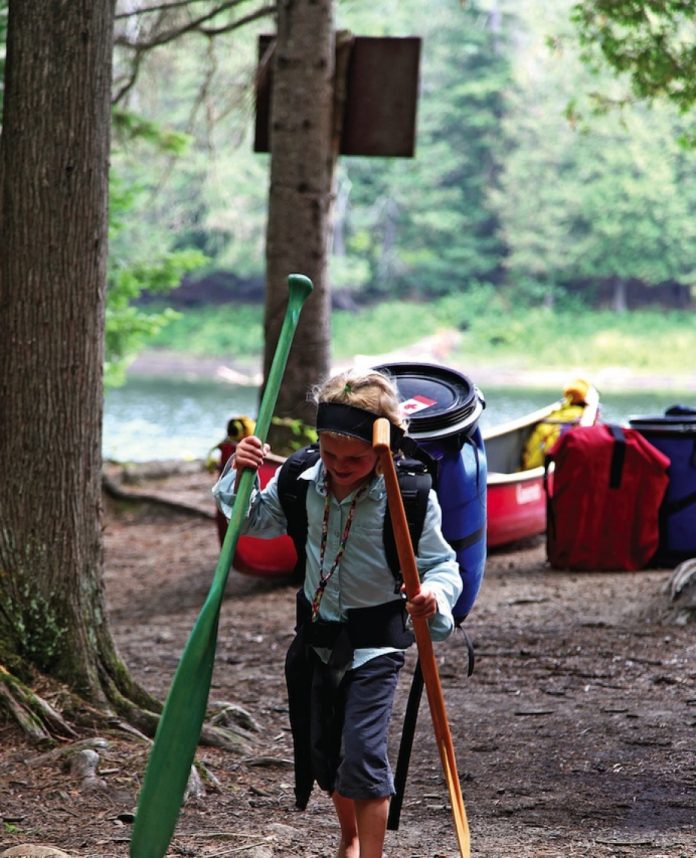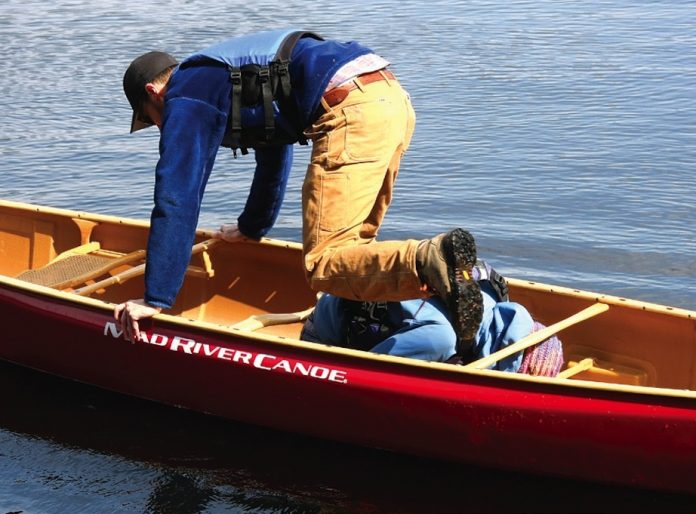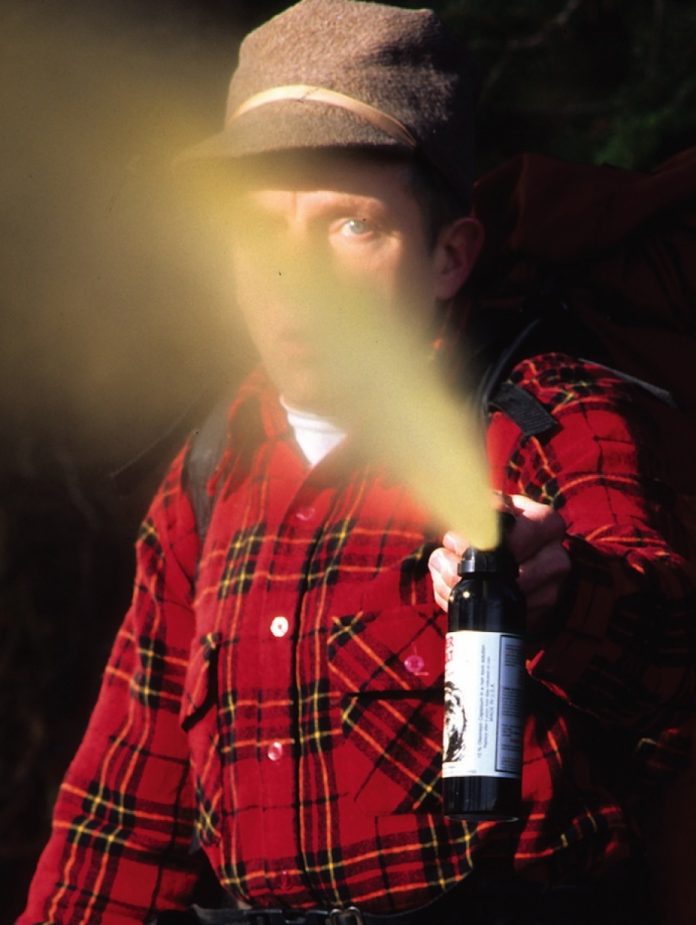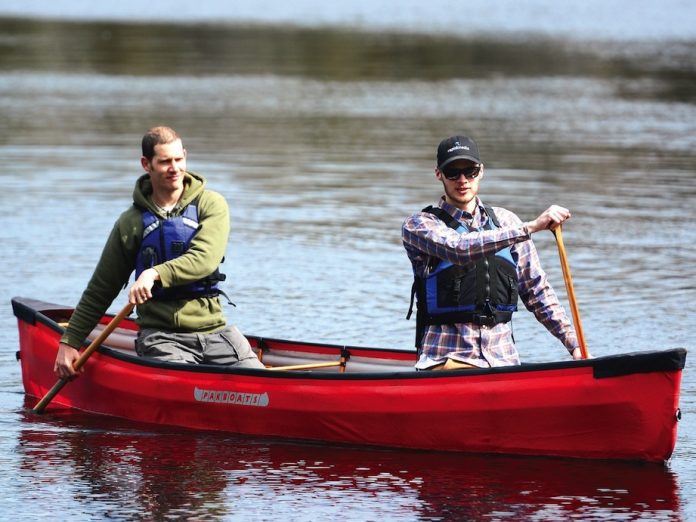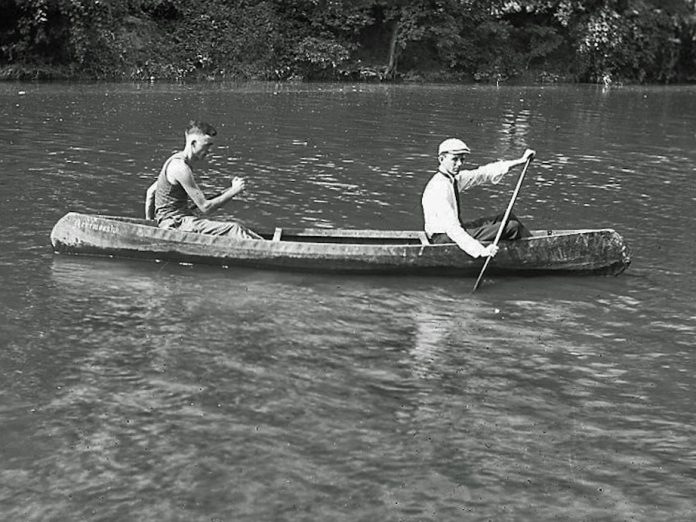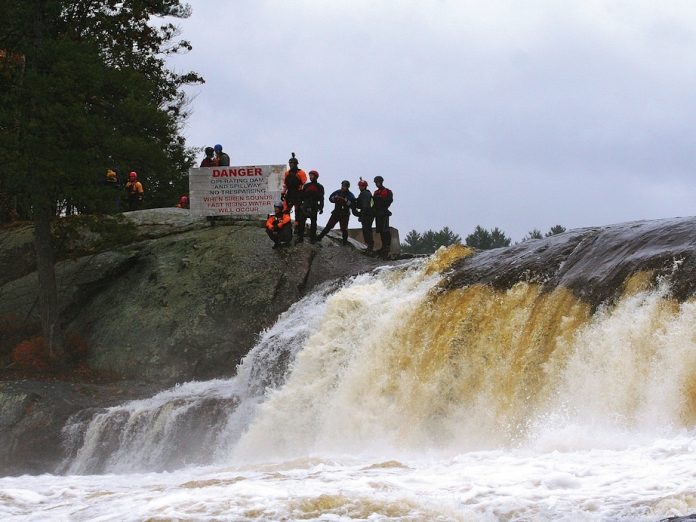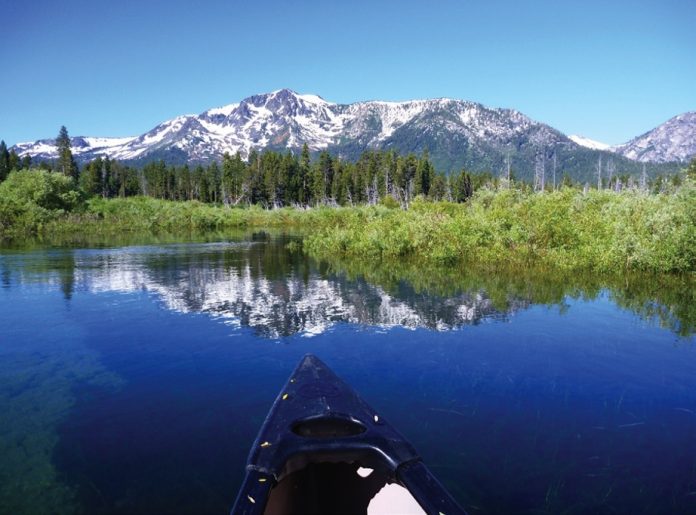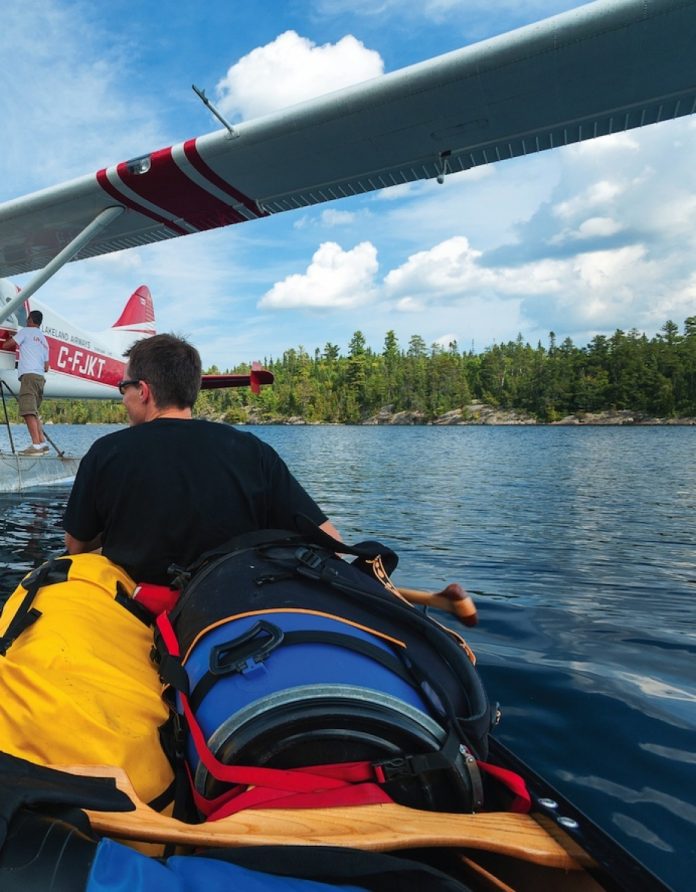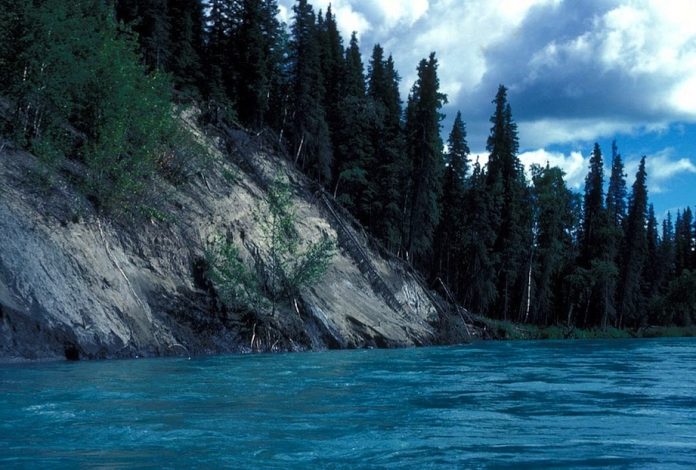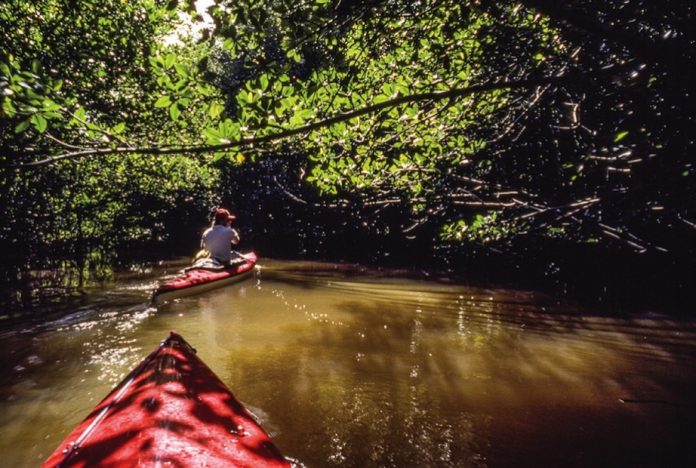I am as proud of my children as the next father on Facebook. Last fall I posted this photo of my six-year-old daughter, Kate. We’d just finished a couple days camping, fishing and paddling the whitewater section of the lower Madawaska River. In preparation for the trip, I left Kate’s barrel outside her bedroom door. She filled it with all her own camping gear, checking items off the list we’d prepared. On trip, Kate caught and helped cook us a bass dinner. She did more than her share of the dishes. And here she’s beginning the uphill, 600-meter portage from the take-out to the truck. Yup, a proud father I am.
You know what the very first comment was on Facebook? Someone wrote, “I hope she’s not using those paddles as walking sticks.”
Really? Where does this come from, this paddles-as-treasure mentality?
I asked Jeremy Ward, curator at the Canadian Canoe Museum, if the voyageurs coveted their paddles. He told me that of all the items issued by the north west company, paddles were not on the list. Little is known about where the paddles came from because there isn’t very much written about paddles at all. Much about the whiskey and the heavy packs, not much of the paddles.
I believe paddles were thought of as simple tools, as romantic as a carpenter’s hammer. I believe that paddles were used until they broke and could be used no more. Then they were burned in the cook’s fire or tossed in the flames as the boys drank—good riddance. I certainly feel the same about my computer some days.
Perhaps new paddles were carved on the spot. Maybe the voyageurs carried spares—although carrying anything extra seems doubtful. No matter, it’s unlikely Jean Luc turned to his companion on the portage, leather tumpline cutting into his sweaty forehead, and said, “Tabernac, your paddle is not a walking stick.” Why? Because paddles are, in fact, perfect walking sticks when carrying 180-pound loads over uneven terrain.
My guess is that this all stems from summer camps where they have strict no-walking-stick policies. I get it. Camp paddles have to last for hundreds of children on hundreds of trips. Not to mention teaching valuable childhood lessons in respect.
How you feel about paddles is here nor there, really. To you, maybe, they are to be treasured. To me, and to Kate, paddles are tools. We can debate it further with a barrel of whiskey around a crackling campfire.
But aren’t we missing the point? Look at this picture again. What else do you see? What about the little girl humping her own gear. A little girl who runs rapids. Who catches and cooks her dinner.
Paddles and little girls are better outside. They are better when they are well-grounded. Scratches can be sanded smooth and broken paddles replaced. Lost childhoods cannot be hung on the wall.
This article originally appeared in Canoeroots & Family Camping, Early Summer 2013. Download our free iPad/iPhone/iPod Touch App or Android App or read it here.



